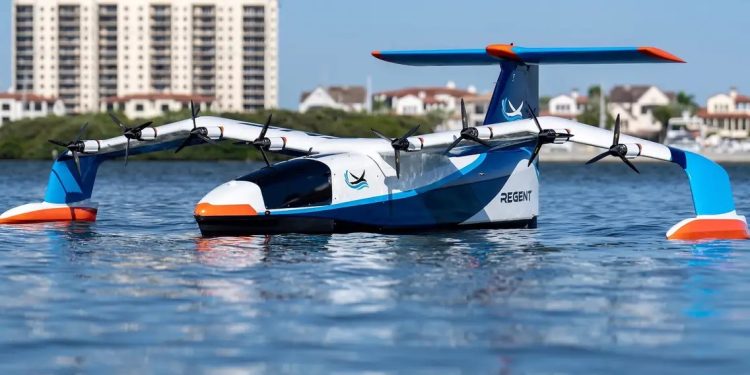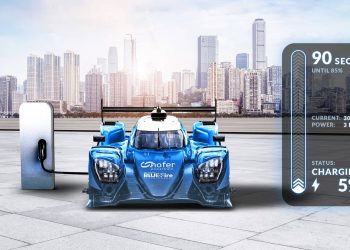Companies working on electric vehicles are not only focusing their efforts on improving transportation, decarbonizing it and offering environmentally friendly options in the urban environment. From regions located near the sea, companies are testing to surprise with their innovations.
In this sense, the manufacturer Regent presented progress in the tests of the world’s first electric seaplane carried out in Narragansett Bay, Rhode Island, United States.
The vehicle flies at low altitude over the water, so its characteristics are somewhat different from those of a regular airplane.
It has three modes. First, it works as a traditional boat as soon as it leaves the dock. Then, it also works as a hydrofoil, which is a form of vehicle popular in sailing competitions. And finally, in open water it can take flight.
Features
It can accommodate 14 people (12 passengers and 2 crew), but the size could vary as it is a prototype. They also plan to make a version for transporting goods, which announces 1,600 kg of load capacity.
It stands out for an amazing range of 160 nautical miles (about 300 km) and a cruising speed of 156 knots (290 km/h).
It has a wingspan of 5.5 meters (18 feet) and has been instrumental in proving the viability of seaplane technology. However, Regent is thinking about the next step and is focused on developing a 19.8-meter (65-foot) prototype, the actual size it plans to market. The company will begin testing the full-size prototype in 2023 and begin actual passenger-carrying trials in 2024.
Related content:Scientists Develop Solar Panel to Increase Electric Car Autonomy
Offshore Solution
Regent CEO and Co-Founder, Billy Thalheimer, noted that there hasn’t been a new mode of transportation since the helicopter, so seaplanes will provide relief for travelers looking for an alternative to serve coastal communities such as New York, the Hawaiian Islands, Barcelona, Tokyo and many more around the world.
For his part, CTO and Co-Founder of the company, Mike Klinker, pointed out that 40% of the world’s population lives in coastal communities. “The success of these flights gives us full confidence in our ability to apply this technology on a large scale and bring seaplanes into global commercial service by 2025”.












